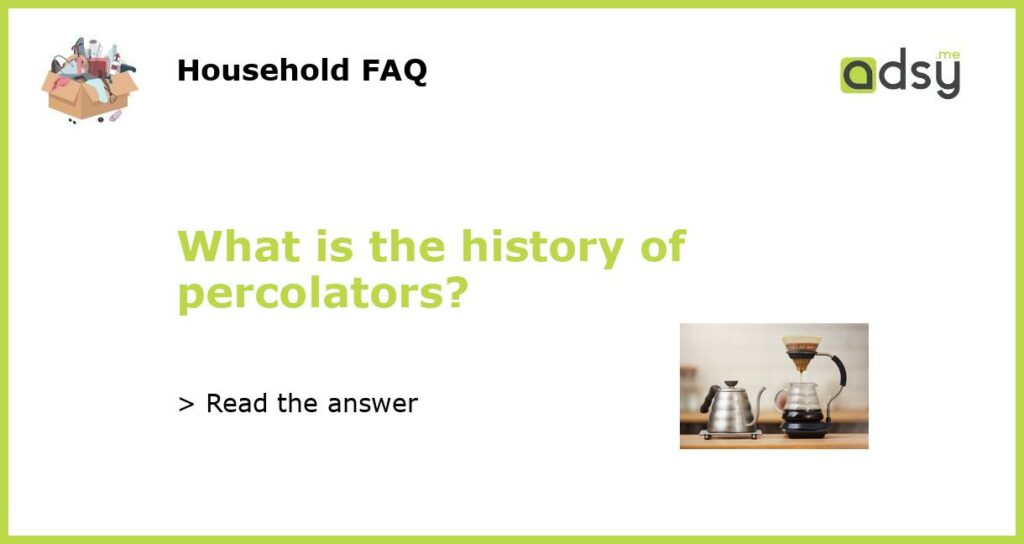The Origins of Percolators
Percolators have a long and fascinating history, tracing back to ancient times. The earliest evidence of percolation can be found in the Middle East, where coffee was first discovered. The exact origins of percolators are unclear, but it is believed that they were first used in the Arabian Peninsula, around the 9th century.
The concept of percolation is based on the principle of water passing through a porous substance and extracting the desired flavors and aromas. In the case of coffee percolators, the water is heated and forced through a chamber containing coffee grounds, allowing the liquid to extract the coffee compounds and creating a flavorful brew.
The Rise and Fall of the Manual Percolator
Percolators gained popularity in the late 19th and early 20th centuries when they were introduced to the Western world. The first manual percolators consisted of a pot with a chamber and a vertical tube leading to a perforated chamber on top. Hot water was poured into the lower chamber, and as it boiled, the water would rise up the tube and percolate through the coffee grounds, creating a rich and robust coffee.
Manual percolators became a staple in many households, providing a convenient way to brew coffee. However, with the advent of electric coffee makers in the mid-20th century, the popularity of manual percolators started to decline. Electric coffee makers offered a more automated process with consistent results, making them more appealing to consumers.
The Electric Percolator Revolution
The invention and widespread adoption of electric coffee makers marked a turning point in the history of percolators. The first electric percolators were introduced in the early 20th century, but it wasn’t until the 1950s and 1960s that they became popular household appliances.
Electric percolators improved upon the manual design by automating the brewing process. They featured an electric heating element that heated the water, eliminating the need for a stovetop or open flame. The water would then percolate through the coffee grounds, creating a consistent and flavorful brew.
Electric percolators quickly became a mainstay in American households, with brands like Presto and Farberware leading the market. They offered convenience, speed, and ease of use, making them a popular choice among coffee lovers.
The Decline and Resurgence of Percolators
While electric percolators reigned supreme for several decades, their popularity began to wane in the late 20th century. The rise of drip coffee makers and espresso machines offered a new way to brew coffee, with more control over the extraction process and the ability to make specialty drinks like lattes and cappuccinos.
Percolators were largely relegated to the background, considered old-fashioned and outdated by many coffee enthusiasts. However, in recent years, there has been a resurgence of interest in percolators among coffee aficionados.
The Modern Percolator Experience
Today, percolators are experiencing a revival, fueled by nostalgia and a desire for a different brewing experience. Modern percolators retain the classic design but incorporate new features and improvements.
Stovetop percolators, which can be used on a variety of heat sources including gas and electric stoves, offer a traditional brewing method and allow for more control over the brewing process. Electric percolators have also evolved, with advanced temperature controls and brewing options.
The history of percolators is a testament to the enduring appeal of this brewing method. From their humble beginnings in the Middle East to the rise and fall of manual percolators and the electric percolator revolution, they have left an indelible mark on the world of coffee brewing.






